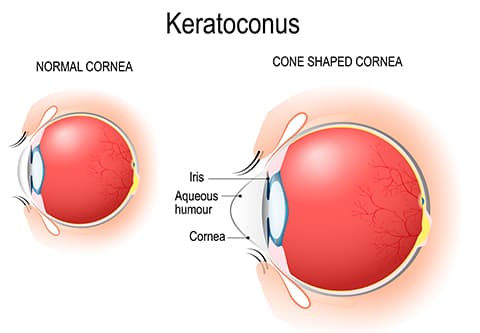Keratoconus is a progressive eye disorder that causes the cornea, the clear front part of the eye, to thin and bulge into a cone-like shape. This irregular shape can significantly distort vision, making it difficult to perform everyday tasks. Keratoconus typically begins in the teenage years and can continue to progress for 10-20 years, eventually stabilizing in most cases. While the exact cause is not fully understood, it is believed to be the result of a combination of genetic and environmental factors. Early detection and proper treatment are crucial to managing the condition and preserving vision. If you are experiencing any changes in your vision, it is important to consult with an eye care professional to determine if keratoconus may be the underlying cause.

Causes and Risk Factors
The exact cause of keratoconus is unknown, but several factors are believed to contribute to its development:
Genetics: The family history of keratoconus increases the risk of developing the condition.
Environmental Factors: Chronic eye rubbing, poorly fitting contact lenses, and exposure to ultraviolet rays from the sun may contribute to the condition.
Systemic Conditions: Keratoconus is sometimes associated with certain systemic conditions such as Down syndrome, Ehlers-Danlos syndrome, and Marfan syndrome.